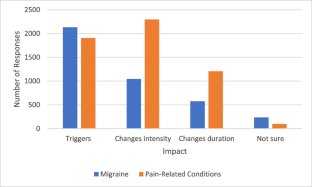2024-01-11 カロリンスカ研究所(KI)
◆この大規模な研究では、2001年から2018年にかけての生まれた86,500人以上の女性と対照群の865,500人以上を比較し、妊娠中のうつ病の女性も死亡リスクが上昇していることが示されました。研究者は、これらの女性が特に脆弱であり、将来の介入が必要であると強調しており、既存のツールをより効果的に利用することが重要だと主張しています。
<関連情報>
- https://news.ki.se/perinatal-depression-linked-to-increased-risk-of-death
- https://www.bmj.com/content/384/bmj-2023-075462
周産期うつ病と死亡リスク:スウェーデンにおける全国規模の登録ベースの研究 Perinatal depression and risk of mortality: nationwide, register based study in Sweden
Naela Hagatulah,Emma Bränn,Anna Sara Oberg,Unnur A Valdimarsdóttir,Qing Shen,Donghao Lu
BMJ Accepted: 7 November 2023
DOI:https://doi.org/10.1136/bmj-2023-075462

Abstract
Objective To determine whether women with perinatal depression are at an increased risk of death compared with women who did not develop the disorder, and compared with full sisters.
Design Nationwide, register based study.
Setting Swedish national registers, 1 January 2001 to 31 December 2018.
Participants 86 551 women with a first ever diagnosis of perinatal depression ascertained through specialised care and use of antidepressants, and 865 510 women who did not have perinatal depression were identified and matched based on age and calendar year at delivery. To address familial confounding factors, comparisons were made between 270 586 full sisters (women with perinatal depression (n=24 473) and full sisters who did not have this disorder (n=246 113)), who gave at least one singleton birth during the study period.
Main outcome measures Primary outcome was death due to any cause. Secondary outcome was cause specific deaths (ie, unnatural and natural causes). Multivariable Cox regression was used to estimate hazard ratios of mortality comparing women with perinatal depression to unaffected women and sisters, taking into account several confounders. The temporal patterns of perinatal depression and differences between antepartum and postpartum onset of perinatal depression were also studied.
Results 522 deaths (0.82 per 1000 person years) were reported among women with perinatal depression diagnosed at a median age of 31.0 years (interquartile range 27.0 to 35.0) over up to 18 years of follow-up. Compared with women who did not have perinatal depression, women with perinatal depression were associated with an increased risk of death (adjusted hazard ratio 2.11 (95% confidence interval 1.86 to 2.40)); similar associations were reported among women who had and did not have pre-existing psychiatric disorder. Risk of death seemed to be increased for postpartum than for antepartum depression (hazard ratio 2.71 (95% confidence interval 2.26 to 3.26) v 1.62 (1.34 to 1.94)). A similar association was noted for perinatal depression in the sibling comparison (2.12 (1.16 to 3.88)). The association was most pronounced within the first year after perinatal depression but remained up to 18 years after start of follow up. An increased risk was associated with both unnatural and natural causes of death among women with perinatal depression (4.28 (3.44 to 5.32) v (1.38 (1.16 to 1.64)), with the strongest association noted for suicide (6.34 (4.62 to 8.71)), although suicide was rare (0.23 per 1000 person years).
Conclusions Even when accounting for familial factors, women with clinically diagnosed perinatal depression were associated with an increased risk of death, particularly during the first year after diagnosis and because of suicide. Women who are affected, their families, and health professionals should be aware of these severe health hazards after perinatal depression.


